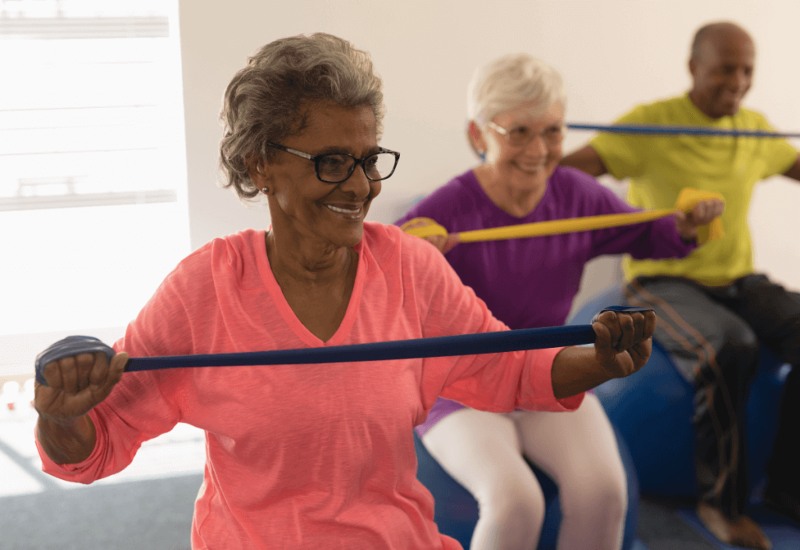Exercise is crucial for the elderly to remain fit and mobile. However, not over-exerting themselves and remaining within their capability boundaries is also important, mainly for avoiding accidents and subsequently injuries.
Therefore, finding gentle exercises that you can do with your senior family members to help them maintain a good standard of health is a worthwhile and helpful activity for anybody with the time to do so.
Importance of exercise
Exercise, of course, is key for those of all ages to stay healthy. The physical benefits of particular importance to the elderly, however, are the reduction of the impact of chronic diseases, the improvement of sleep and the increasing of general mobility.
The four exercises below are gentle, slow-paced forms of exercise that you can do with senior family members to help give them these physical boosts.
1. Swimming
The benefits of swimming – renowned for being a form of exercise that gives your whole body a workout – are many, but some of the more internal effects are less well known. For instance, swimming helps keep hearts healthy by improving cardiovascular endurance and lowering blood pressure.
Swimming is also a fantastic family activity, as young children and elderly relatives alike will have fun and get the exercise they need at their own pace. Many swimming pools will often have certain hours dedicated to seniors, too, so that they can go at quieter times of the day and be less disturbed by those swimming quickly and aggressively.
2. Aerobics
Gentle aerobics is low impact and improve joint mobility and cardiovascular strength greatly. Not only are aerobics effective and soft-core, but they are also perfect forms of exercise for doing at home, ideal for those who use SmithLife home health care services or that self-isolating in the house.
Aerobics can be carried out using household objects such as chairs, books and staircases and are therefore one of the cheapest forms of exercise available.
3. Dog walking
If you own a dog, walking it is naturally a necessity. Working long hours can often be a huge struggle for dog owners, who in tricky circumstances end up paying for dog walkers to fill the void. However, if your elderly relative is comfortable with pets and the dog is used to them, leaving your canine companion with your family member could be a mutually beneficial option.
On weekends or your days off, walk the dog with your family member to get them more accustomed to each other’s presence while also encouraging your relative to get outdoors more. Walking is incredibly low impact as a form of exercise yet can be as effective as running at building stamina and improving digestion.
4. Pilates
Last but not least, Pilates is superb for strengthening the core, improving balance and stability, which is useful for simply getting around once you reach a certain age.
Pilates focuses on the quality of your movement, rather than how many repetitions you can manage, making it an advisable choice for older members of the population looking to have better flexibility, strength and steadiness.
